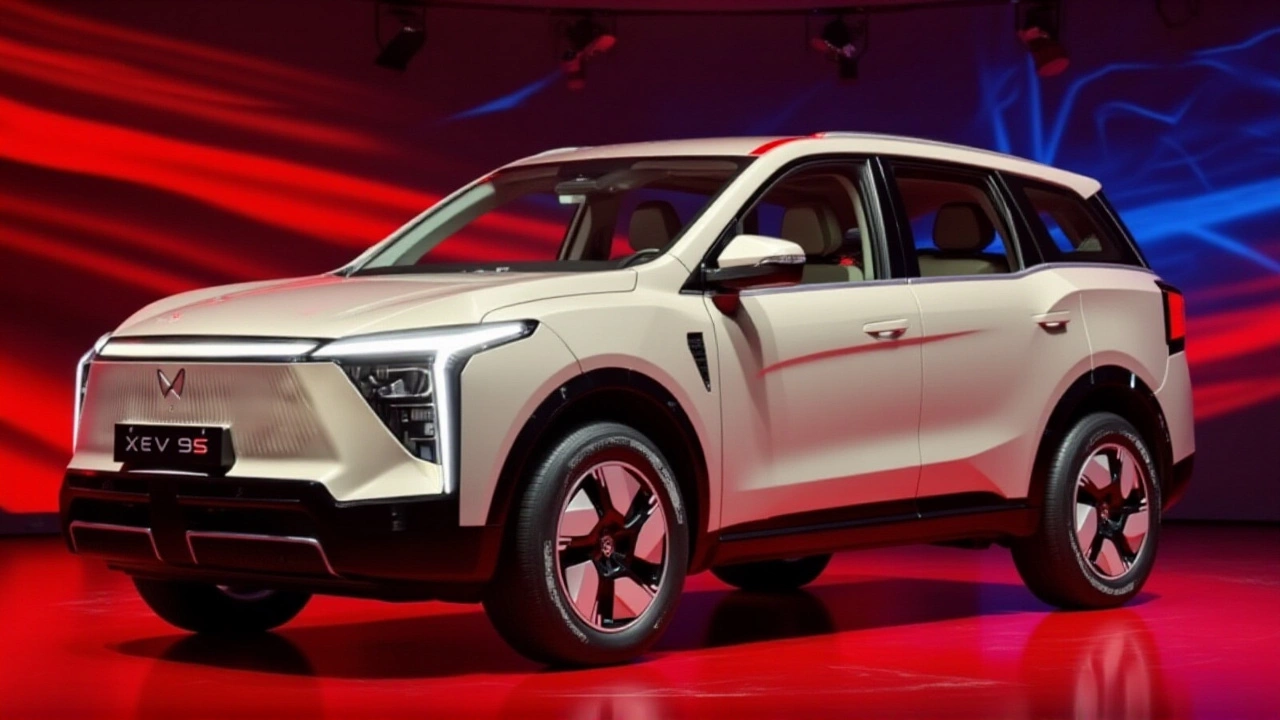When Mahindra & Mahindra Limited rolled out the XEV 9S at the 'Scream Electric' event in Bengaluru on November 27, 2025, it didn’t just launch a new car—it rewrote the rules for Indian families chasing electric mobility. The Mahindra XEV 9S is India’s first mass-market, all-electric three-row SUV, priced from Rs 19.95 lakh (ex-showroom), and it’s not just another EV. It’s a direct challenge to premium SUVs costing nearly four times as much. With a 79 kWh battery option delivering 282 bhp and a 0–100 kmph time of just seven seconds, Mahindra is betting that Indian buyers won’t just accept compromises for sustainability—they’ll demand performance, space, and tech all in one package.
More Than Just a Bigger BE 6
The XEV 9S isn’t simply an elongated version of Mahindra’s BE 6. It’s built on the company’s proprietary INGLO platform, engineered from the ground up for electric vehicles. That means a flat floor, optimized weight distribution, and a cabin that feels spacious even with three rows of seats. The entry-level One Above trim starts at Rs 19.95 lakh—Rs 1.05 lakh above the BE 6 but Rs 1.95 lakh below the XEV 9e. That positioning is deliberate: Mahindra is carving out a sweet spot between affordability and premium appeal. The XEV 9S offers three battery options: 59 kWh (228 bhp), 70 kWh (241 bhp), and the headline-grabbing 79 kWh (282 bhp). All variants churn out a consistent 380 Nm of torque. That’s more punch than most petrol-powered mid-size SUVs, and it’s delivered silently, instantly, and with zero tailpipe emissions.Inside the Cabin: Tech That Feels Like a Luxury Car
Step inside, and you’re met with a three-screen digital dashboard—something you’d expect in a BMW or Mercedes, not a Rs 20 lakh SUV. Second-row passengers get their own touchscreens, reclining seats with ventilation, and ambient lighting that shifts color based on driving mode. The panoramic sunroof floods the cabin with natural light, while the Harman Kardon audio system turns every drive into a concert hall. Even the small details matter: flush-fitted door handles reduce drag, the powered tailgate opens with a foot gesture, and the in-cabin camera lets parents monitor kids remotely. And yes, there’s an AR HUD projecting speed, navigation, and ADAS alerts onto the windshield—no need to look away from the road. Mahindra didn’t just add features; it reimagined the family SUV experience for the electric age.
Range, Performance, and the Rs 80 Lakh Rival
The 79 kWh variant claims a 600 km ARAI-certified range—the highest in its class—and a top speed of 200 kmph. But what’s more striking is Mahindra’s bold claim: this version rivals SUVs priced at Rs 80 lakh. Think Range Rover Velar, Audi Q6 e-tron, or even the Tesla Model Y Long Range. The XEV 9S doesn’t match them in brand prestige, but it does in power, tech, and space. With 394 liters of boot space and a 150-liter frunk (front trunk), it’s practical for weekend getaways or daily school runs. The 10.9-meter turning circle makes it surprisingly nimble for its size, and the adaptive suspension smooths out India’s worst roads. Even the aerodynamic wheels and roof rails aren’t just for looks—they cut drag and extend range.What’s Next? Bookings, Test Drives, and the Competition
Test drives begin December 5, 2025, and bookings open on January 14, 2026, with deliveries starting January 23, 2026. That tight timeline suggests Mahindra is ready to scale production fast. The XEV 9S comes in four trims, with the 70 kWh battery exclusive to the mid-spec Pack Two Above variant. This isn’t a gamble—it’s a calculated move. Tata Motors’ Nexon EV Max and MG Comet EV are strong in the 5-seater segment, but neither offers three rows. Hyundai’s Ioniq 5 and Kia EV6 are sleek, but they’re not family SUVs. The XEV 9S fills a gap no one else has dared to touch.
Why This Matters for India’s EV Push
India’s EV adoption has been slow, especially in the premium segment. Most buyers stick to two-wheelers or compact hatchbacks. The XEV 9S changes that. It proves that Indian consumers aren’t just looking for cheap EVs—they want capable, spacious, tech-rich vehicles that don’t ask them to sacrifice anything. If Mahindra delivers on its promises, this could be the model that finally makes electric SUVs mainstream in India. It also signals a shift: automakers are no longer just building EVs to meet CAFE norms—they’re building them to win hearts.Frequently Asked Questions
How does the XEV 9S compare to the Tesla Model Y in terms of space and price?
The Tesla Model Y is a 5-seater with a starting price of around Rs 40 lakh in India, while the XEV 9S offers three rows and seven seats for less than half the price. The XEV 9S has more rear legroom and a larger boot (394 liters vs. 854 liters in Model Y, but the Model Y’s frunk is smaller). For families needing extra seats without premium pricing, the XEV 9S is a game-changer.
Why is the 70 kWh battery only available in the Pack Two Above trim?
Mahindra is likely using the 70 kWh battery as a differentiator to push buyers toward the mid-tier trim. With 600 km of range and 241 bhp, it strikes a balance between cost and capability. The entry-level One Above uses the 59 kWh for affordability, while the top-spec model gets the 79 kWh for performance—making the 70 kWh the smart middle ground for most buyers.
Will the XEV 9S qualify for FAME-II subsidies?
Yes, if it meets the ARAI-certified range and price thresholds. The XEV 9S’s 600 km range qualifies it under the higher subsidy bracket, and since its price is under Rs 25 lakh, it should be eligible for up to Rs 1.5 lakh in central subsidies. State-level incentives may apply too, making the effective price even more competitive.
What’s the charging time for the 79 kWh battery?
Mahindra hasn’t released official figures yet, but based on similar EVs, the 79 kWh pack should charge from 10% to 80% in about 35 minutes on a 150 kW DC fast charger. At home, using a 7.4 kW AC charger, it’ll take roughly 11–12 hours for a full charge—typical for large-battery EVs.
How does the XEV 9S handle Indian road conditions?
With a ground clearance of 190 mm, adaptive suspension, and a robust INGLO platform, the XEV 9S is designed for India’s potholes and uneven surfaces. Unlike some European EVs that ride too low or stiff, Mahindra has tuned the suspension for comfort over speed—making it ideal for long highway drives and city commutes alike.
Is the XEV 9S safe for children and elderly passengers?
Yes. The XEV 9S includes ISOFIX anchors for child seats, six airbags, electronic stability control, and advanced ADAS with 12 sensors, including radar-based blind-spot monitoring and rear cross-traffic alert. The second-row seats are ventilated and reclining, making them ideal for elderly passengers. The in-cabin camera also lets drivers check on kids without turning around.

